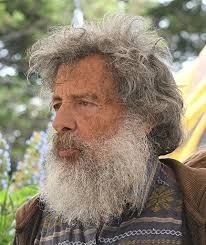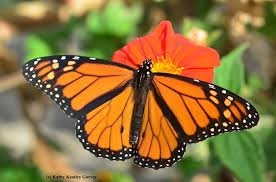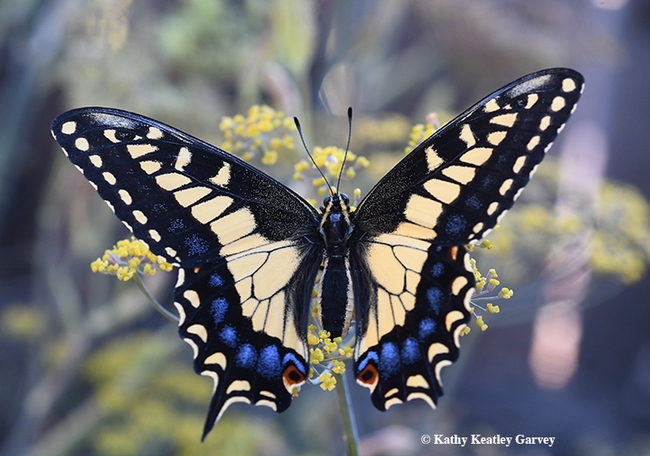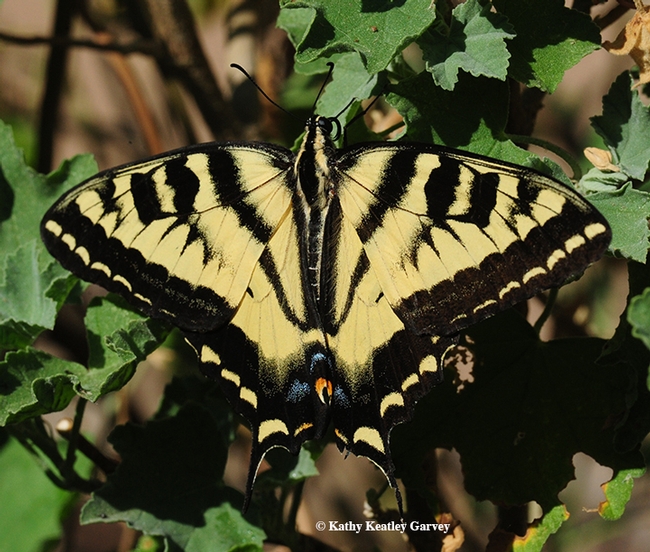
If you've ever wanted to converse with butterfly guru Art Shapiro, UC Davis distinguished professor of evolution and ecology, about "butterflies and the apocalypse" and sip a beer (or another beverage) at the bar at the same time, here's your chance.
The Davis Science Café has booked "A Conversation with Arthur Shapiro: Butterflies as Heralds of the Apocalypse" at 5:30 p.m., Wednesday, April 10 in the G Street Wunderbar, located at 228 G St., Davis. The event, hosted by professor Jared Shaw, professor and interim department chair of the UC Davis Department of Chemistry, is free and open to the public (but the refreshments are not).
Shapiro has monitored butterfly population trends on a transect across central California since 1972. The 10 sites stretch from the Sacramento River Delta through the Sacramento Valley and Sierra Nevada mountains to the high desert of the Western Great Basin. The largest and oldest database in North America, it was recently cited by British conservation biologist Chris Thomas in a worldwide study of insect biomass.

What's going on with the butterflies?
The overwintering western population of the monarch butterfly on the central California coast declined 86 percent last winter, the Xerces Society for Invertebrate Conservation indicates on its website. "Working at a conservation nonprofit means that we often come across bad news, but the results from this winter's Western Monarch Thanksgiving Count left us shocked: an all-time record low of 28,429 monarchs at 213 sites. This number is an 86% drop from the previous count done at Thanksgiving 2017, when 192,668 monarchs were counted at 263 sites (comparing only the sites monitored in both years)—and a dizzying 99.4% decline from the numbers present in the 1980s (Schultz et al. 2017). In short, only one of every 160 monarchs present in the 1980s exists today."
At the 2018 Butterfly Summit at Annie's Annuals and Perennials in Richmond, Shapiro told the crowd that "The vast majority of the butterflies we monitor are emerging earlier in the year now than they were in the 1970s."
His research shows that not only are butterflies coming out earlier, but "we also find trends in population and species richness."
Shapiro, a member of the UC Davis faculty since 1971 and author of the book, Field Guide to Butterflies of the San Francisco Bay Area and Sacramento Valley Regions, said that "in a nutshell, at low elevations, butterfly faunas have been declining slowly until 1999. In 1999, 17 species had an abrupt fall in abundance, spontaneously. On its face, this was a non-random event. The decline was then rapid from 1999 to the onset of the recent drought and then things went up again."
Science Café, initially supported by the National Science Foundation, is currently supported by the Department of Chemistry and Division of Mathematical and Physical Sciences and promoted by Capital Science Communicators.
Science Café sessions are hosted the second Wednesday of each month. Topics so far this year? Plant ecologist Mark Schwartz of the UC Davis Department Environmental Sciences and Policy held forth at the March session on "Does California Have a Wildfire Problem? Can It Be Fixed?" The February session featured Professor Roland Faller of the UC Davis Department of Chemical Engineering on "Using Computers to Understand Materials: From Proteins to Semiconductors" while Professor Denis Marcellin-Little of the UC Davis School of Veterinary Medicine's Surgical and Radiological Sciences discussed "Don't Try That at Home; High-End 3D Printing in Orthopedic Surgery" at the January session.
So it's butterflies and the apocalypse on April 10. Ask your questions, sip an adult beverage (or another beverage) and enjoy the evening!
Attached Images:

